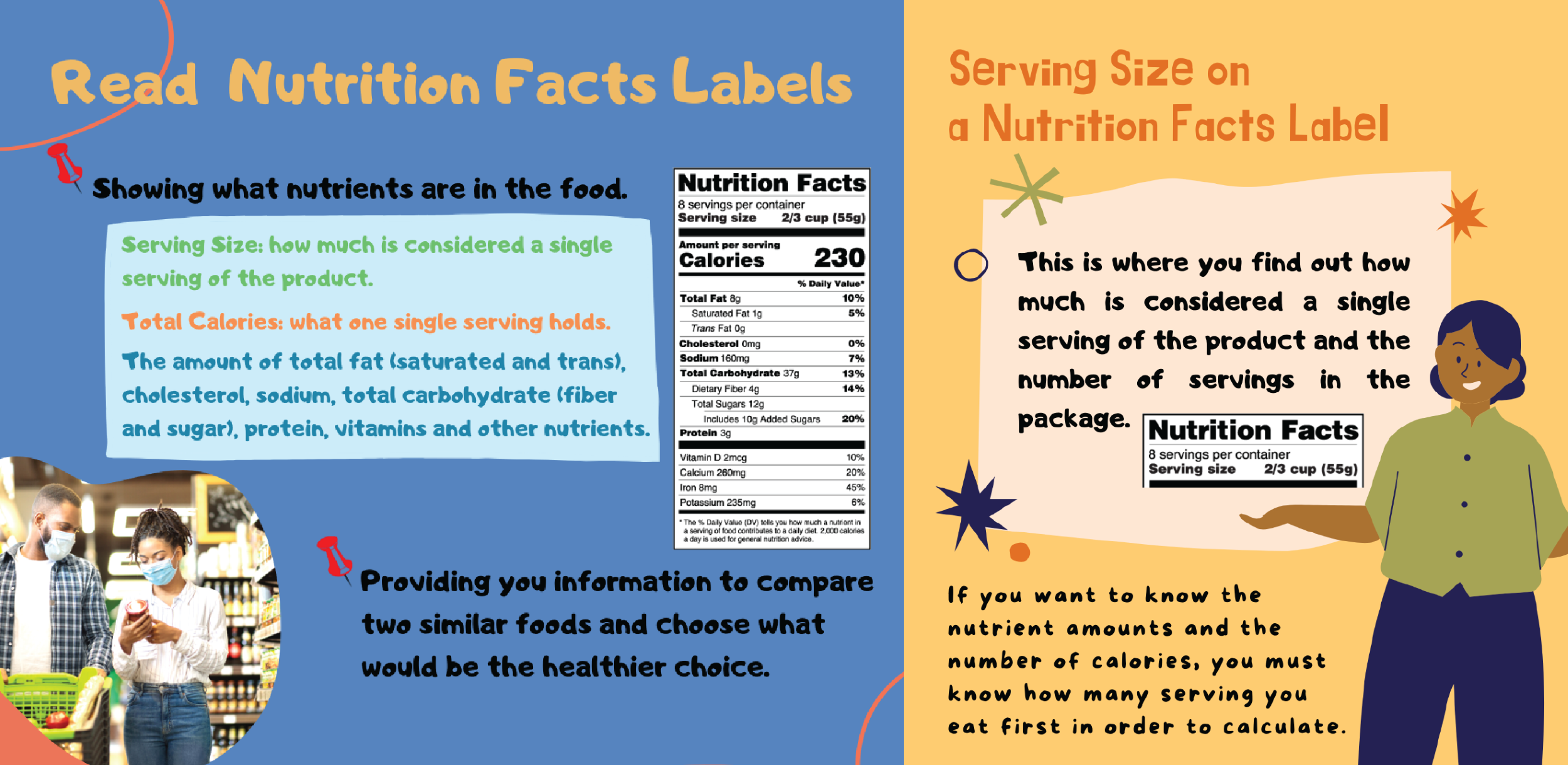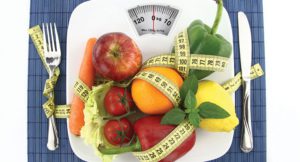When we shop for our food in the supermarket, we should check the Nutrition Facts Labels on the food items. It usually shows you some information for making right and healthier decisions.
What’s on the Nutrition Facts Labels? Let’s check!
- It shows the nutrients found in the food.
By Severing Size:
-
- This is where you find out how much is considered a single serving of the product and the number of servings in the package.
- It is the most important part of a nutrition facts label. Why? If you don’t know what it means, you will misunderstand or misinterpret the label.
- Let us tell you what information it provides to you and how to use it.
💡Find out the information on the label (in the picture above).
-
-
- How much is considered a single serving of the product?
-
👉 1 serving size on the label is “2/3 cup (55g)”.
-
-
- How many servings in the package?
-
👉 The label also says there are “8 servings” in a container.
-
- If you want to know the nutrient amounts and the number of calories, you must know how many serving you eat first to calculate.
Total Calories: what one single serving holds.
The amount of total fat (saturated and trans), cholesterol, sodium, total carbohydrate (fiber and sugar), protein, vitamins, and other nutrients.
- Providing you information to compare two similar foods and choose what would be the healthier choice.
Choose products that are higher in nutrients you want to get more of and lower in nutrients you want to get less of. For instance, the sodium level will affect your blood pressure, so it is recommended to choose low sodium products. Another example, vitamins will help boost immune system, so it is recommended to choose higher vitamins content product, especially under this COVID-19 pandemic circumstance.
Calories on the labels

When you read the nutrition facts label, you always can see calories information. The number of calories in a food refers to the amount of energy stored in that food. Your body uses calories from food for breathing, thinking, walking and other physiological functions.
💡A person needs around 2,000 calories daily to maintain their body functions, but the amount depends on their age, sex, height, current weight, and physical activity level.
For instance, males with more muscle tend to need more calories than females, and people who exercise need more calories than people who don’t.
💡Too high or too low calorie consumption eventually leads to health problems.
One of the most risks associated with high calorie intake is the development of obesity.
High-calorie diet might also be at risk for cardiovascular disease, diabetes, osteoarthritis, etc. However, restricting calories severely can lead to health problems, including lower your metabolism, fatigue, nutrient deficiencies, reduced fertility, weaker bones, lower your immunity, etc.
Let’s look at an example to teach us how to calculate calories based on serving size.


Follow the steps and figure it out.
First, find out serving size information on the labels.
👉It is important to know the amount of one serving size. In this example, one serving of a TOSTITOS chip is 1 oz (about 13 chips).
Second, confirm how many serving sixes in a package.
👉The nutrition labels also tells you how many servings in the package or container. In this example, there are 10 servings in the pack.
Third, calculate the calories.
👉Based on the label, we know there are 140 calories for one serving. Once we know the amount of one serving and the calories per serving, we can calculate the calories of whole package or container. In this example, the total calories are 1,400 kcal.
According to Dietary Guidelines for Americans 2020-2025, the recommendation of calories intake for women is 1,600-2,200 kcal; for men is 2,000-3,000 kcal per day. It means if you eat a whole package of TOSTITOS chip for your snack, it nearly accounts for 50% to 80% of your daily energy needs.
Therefore, we need to control the impulse to eat a whole package. Consuming excessive calories usually leads to obesity and other non-communicable diseases.




